Filter by

Problem Solving in Mathematics Education
Problem solving in mathematics education has been a prominent research field that aims at understanding and relating the processes involved in solving problems to students’ development of mathematical knowledge and problem solving competencies. The accumulated knowledge and field developments include conceptual frameworks to characterize learners’ success in problem solving activities, cogn…
- Edition
- -
- ISBN/ISSN
- 9783319407296
- Collation
- -
- Series Title
- -
- Call Number
- 510 LIL p

Jesuits and the Natural Sciences in Modern Times, 1814–2014 Brill's Resear…
From 1814, linked to their educational work, Jesuits made significant contributions to the natural sciences, especially in the fields of astronomy, meteorology, seismology, terrestrial magnetism, mathematics, and biology in a worldwide network of universities, secondary schools and observatories.; Readership: All interested in the history of Jesuits and their contribution to the natural science…
- Edition
- -
- ISBN/ISSN
- 9789004394896
- Collation
- -
- Series Title
- -
- Call Number
- -
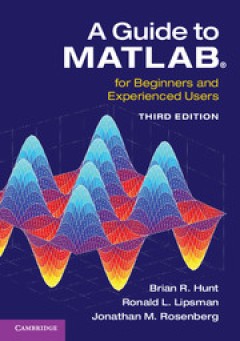
A Guide to MATLAB®
Now in its third edition, this outstanding textbook explains everything you need to get started using MATLAB®. It contains concise explanations of essential MATLAB commands, as well as easily understood instructions for using MATLAB's programming features, graphical capabilities, simulation models, and rich desktop interface. MATLAB 8 and its new user interface is treated extensively in the bo…
- Edition
- -
- ISBN/ISSN
- 9781107338388
- Collation
- -
- Series Title
- -
- Call Number
- -

A Guide to MATLAB For Beginners and Experienced Users
This is a short, focused introduction to MATLAB, a comprehensive software system for mathematical and technical computing. It contains concise explanations of essential MATLAB commands, as well as easily understood instructions for using MATLAB's programming features, graphical capabilities, simulation models, and rich desktop interface. Written for MATLAB 7, it can also be used with earlier (a…
- Edition
- -
- ISBN/ISSN
- 9780511791284
- Collation
- -
- Series Title
- -
- Call Number
- -
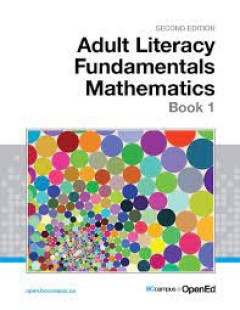
Adult Literacy Fundamental Mathematics : Book 1
Overview: This is book one in a six-book series on fundamental mathematics for adult learners. These books include glossaries, self tests, practice requests, grades records, and unit tests. Ancillary Resources include the Instructor's Manual. Topics in this book include: number and number operations, patterns, functions and relations, real life applications, geometry, and time.
- Edition
- -
- ISBN/ISSN
- -
- Collation
- -
- Series Title
- -
- Call Number
- 510 TAG a
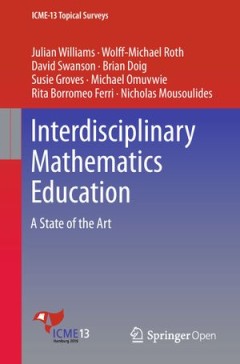
Interdisciplinary Mathematics Education : The State of the Art and Beyond
This open access book is the first major publication on the topic of “Interdisciplinary Mathematics Education” and arose from the work of the first International Topic Study Group of the same name at the ICME-13 conference in Hamburg in 2016. It offers extensive theoretical insights, empirical research, and practitioner accounts of interdisciplinary mathematics work in STEM and beyond (e.g.…
- Edition
- -
- ISBN/ISSN
- 9783319422664
- Collation
- VII, 302 halaman
- Series Title
- ICME-13 Monographs
- Call Number
- 370 INT

Values and Valuing in Mathematics Education Scanning and Scoping the Territory
This engaging open access book discusses how a values and valuing perspective can facilitate a more effective mathematics pedagogical experience, and allows readers to explore multiple applications of the values perspective across different education systems. It also clearly shows that teaching mathematics involves not only reasoning and feelings, but also students’ interactions with their cu…
- Edition
- -
- ISBN/ISSN
- -
- Collation
- -
- Series Title
- -
- Call Number
- -

Invited Lectures from the 13th International Congress on Mathematical Education
Mathematics Education; Mathematics Learning; Mathematics Teaching; Mathematics Teachers; ICME-13; 13th Congress on Mathematical Education; Empirical Studies in Mathematics Education; Theoretical Reflections on Mathematics Education; Tertiary Mathematics Education; Secondary Mathematics Education; Primary Mathematics Education; Society of Didactics of Mathematics; Mathematics Educators; Improvem…
- Edition
- -
- ISBN/ISSN
- 9783319721699
- Collation
- X, 786 halaman
- Series Title
- ICME-13 Monographs
- Call Number
- 510 INV
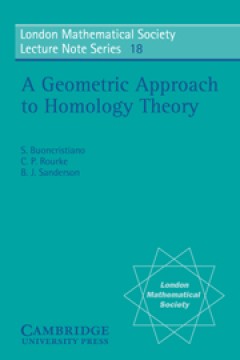
A Geometric Approach to Homology Theory
The purpose of these notes is to give a geometrical treatment of generalized homology and cohomology theories. The central idea is that of a 'mock bundle', which is the geometric cocycle of a general cobordism theory, and the main new result is that any homology theory is a generalized bordism theory. The book will interest mathematicians working in both piecewise linear and algebraic topology …
- Edition
- -
- ISBN/ISSN
- 9780511662669
- Collation
- -
- Series Title
- London Mathematical Society Lecture Note Series (18)
- Call Number
- -
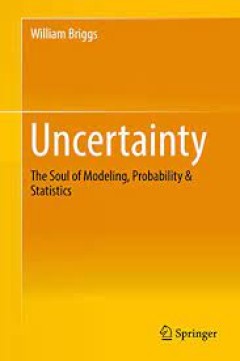
Uncertainty The Soul of Modeling, Probability & Statistics
This book presents a philosophical approach to probability and probabilistic thinking, considering the underpinnings of probabilistic reasoning and modeling, which effectively underlie everything in data science. The ultimate goal is to call into question many standard tenets and lay the philosophical and probabilistic groundwork and infrastructure for statistical modeling. It is the first book…
- Edition
- -
- ISBN/ISSN
- 978-3-319-39756-6
- Collation
- -
- Series Title
- -
- Call Number
- -
 Computer Science, Information & General Works
Computer Science, Information & General Works  Philosophy & Psychology
Philosophy & Psychology  Religion
Religion  Social Sciences
Social Sciences  Language
Language  Pure Science
Pure Science  Applied Sciences
Applied Sciences  Art & Recreation
Art & Recreation  Literature
Literature  History & Geography
History & Geography